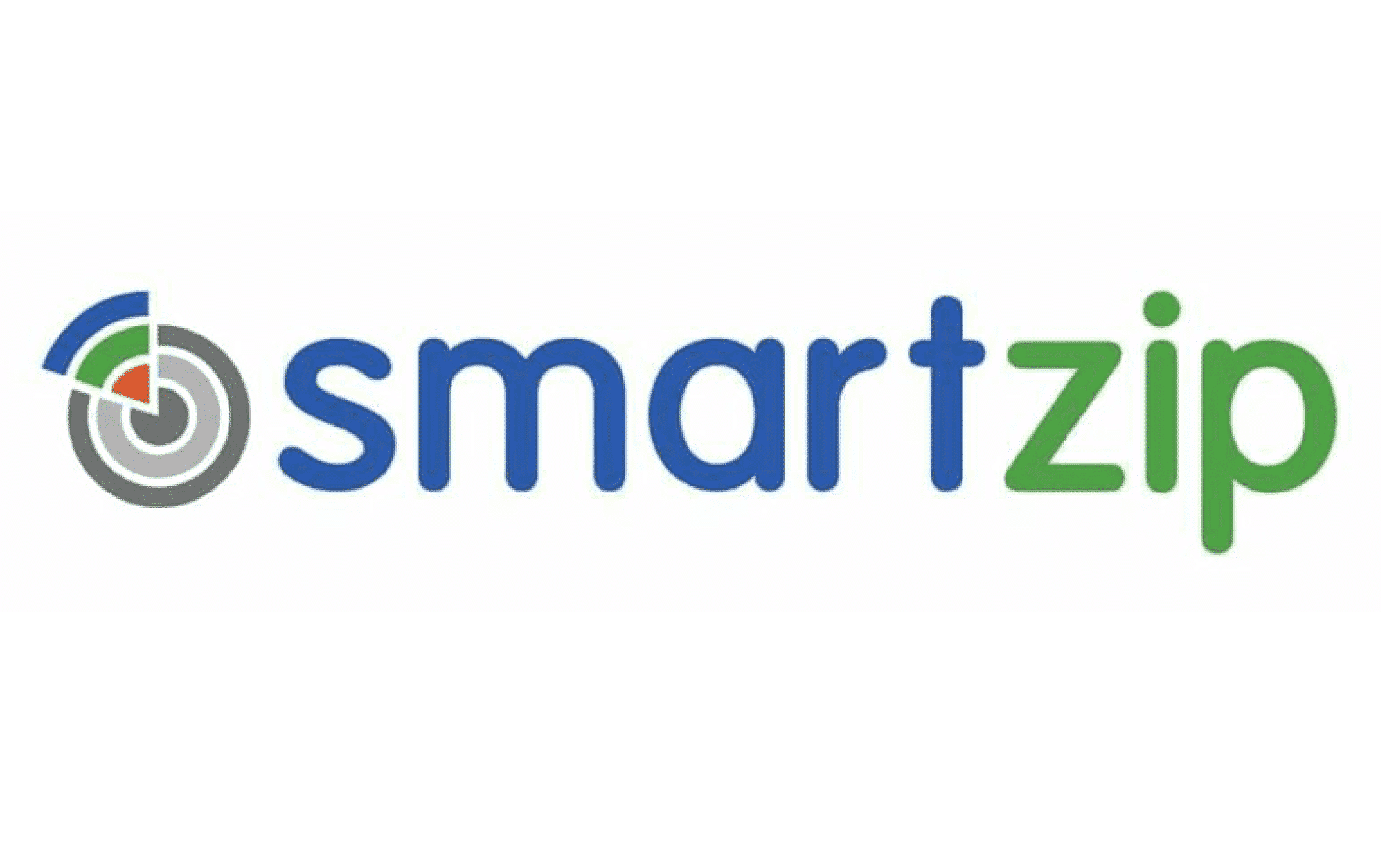Real estate agents have three types of resources at their disposal when marketing their business: their time, talents, and budget. Use too much of one (or more) of these resources in the wrong place or at the wrong time, and your return on investment plummets.
Predictive analytics apps like SmartZip claim they are the best use of your resources. But are they really?
In this article, we’ll talk a little bit about how predictive analytics work, how SmartZip harnesses them to produce results, how much it costs, and ultimately, whether it’s the right tool for you and your business.
Wait, What the Heck Is Predictive Analytics?
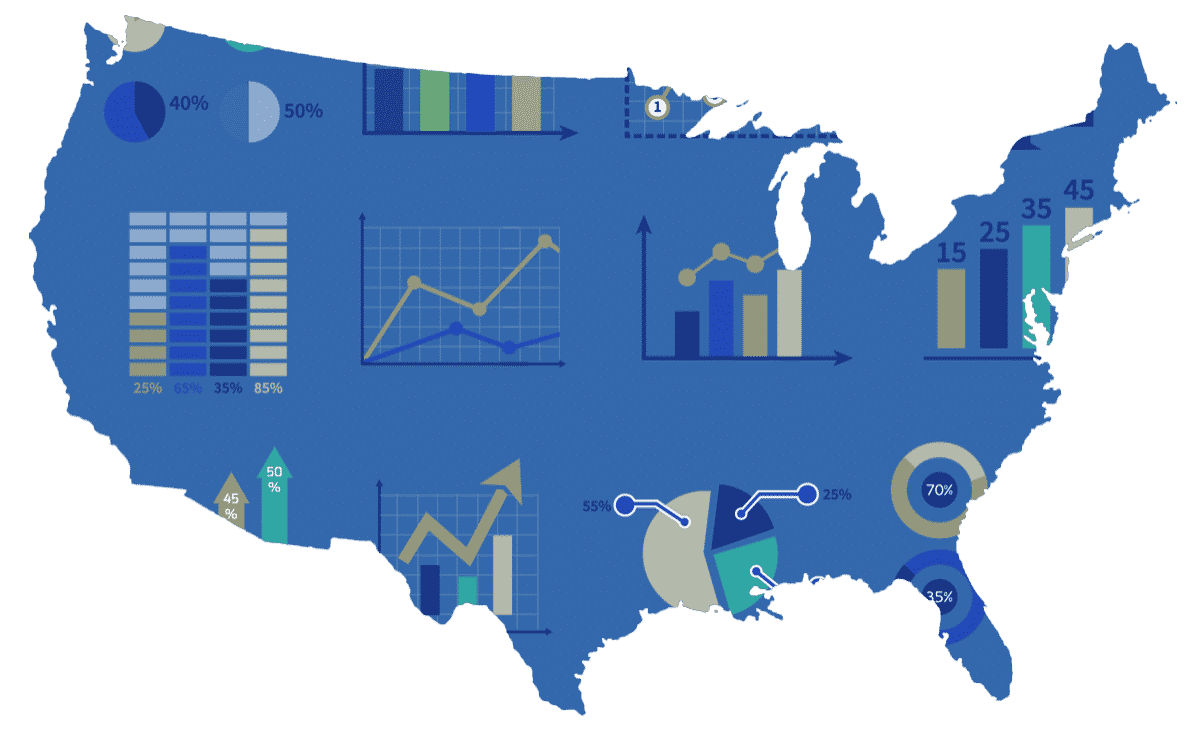
I bet you’ve heard this term before, but are probably a little hazy on what it actually means. So we’re all on the same page, here’s a basic definition:
Predictive analytics use data, both current and historic, to make better predictions about what will happen in the future.
When it comes to real estate, predictive analytics are based on the past and present behavior of homebuyers and sellers, as well as the behavior of the market, so we can better understand which homes and homesellers are the best targets for marketing.
Why Predictive Analytics Matter

OK, so now that we know what predictive analytics are, why are they important to the future of real estate marketing? Here’s an example:
I’m sure there are neighborhoods in your market that are very popular with first-time homebuyers. A typical first-time buyer stays in their property five to seven years, so a sale date of six years ago could be used to predict that a sale in the next 12 to 18 months is likely. This is an example of market behavior, and a data point that can be used to predict future behavior.
But using a single data point like length of ownership is just the tip of the iceberg. Sophisticated predictive analytics models incorporate dozens (if not hundreds) of data points to create a detailed picture of a property and a consumer, allowing for a much more accurate guess as to what will happen next. That’s where SmartZip comes in.
Real estate agents who can use predictive analytics to correctly identify likely candidates for sale will have an advantage over those who don’t since they can focus their marketing efforts on these homeowners instead of blanketing an area with a message that, for most homeowners, will fall on deaf ears.
How Does SmartZip Use Predictive Analytics?

SmartZip uses a proprietary algorithm that aggregates data from more than 25 sources to generate a list of the homes most likely to be listed for sale in a particular market. Some of the data sources that SmartZip uses to feed this algorithm include:
- Property data: Your MLS is ripe with information, including hundreds of data points like number of bedrooms, bathrooms, square footage, and year built. The MLS also houses sold data like the last time the property was sold, whether it was listed and expired or withdrawn, and other important information about the property’s history in the market. This data helps SmartZip identify trends like typical turnover rates for neighborhoods, popular architectural styles, and other factors that might affect demand.
- Behavioral data: Spending a lot of time on Zillow lately? For a real estate-focused predictive analytics model, that is a behavioral indicator that you’re likely to list your home in the coming year. Companies like Google, Facebook, and even your cell phone service provider or your home internet service provider catalog almost all of your behavior online, then package and sell that data to companies so that they can better serve advertisements to you, or to analytics companies (like SmartZip) for further study.
- Consumer data: Every time you swipe your card at the checkout, those purchases are logged by your credit card company, and that data is packaged and sold to companies who are trying to better understand what your purchases today will say about your purchases (and behavior) in the future. For instance, if you’re at Home Depot every weekend buying supplies for a bathroom remodel, this could mean you’re finishing projects necessary to getting a higher price when selling your home.
- Demographic data: Are you a parent of a child about to graduate high school? Maybe the last of your kids has launched their lives and you find yourself with a house bigger than you need? These sorts of life events are demographic indicators that can suggest a move might be imminent.
On their own, each of these categories provides an interesting insight into your life. But combined together and fed into the SmartZip algorithm, SmartZip users have a powerful tool to separate the homes and property owners who are the most likely candidates for sale in the coming months.
How Much Does SmartZip Cost?
SmartZip’s pricing varies depending on two factors: median property value and the size of the market you purchase. The minimum monthly cost with SmartZip is about $350; many agents report their typical SmartZip spend is about $1,000 a month. SmartZip also requires a 12-month contract to get started.
This entry cost gets real estate agents access to Smart Data, the results of the SmartZip algorithm for the market you’re working in. With Smart Data, you get a list of the most likely properties to list for sale in the markets you’ve opted into, including lead profiles with contact information like phone numbers and social media accounts for each of the homeowners who will allow you to target marketing you create specifically to them. However, Smart Data isn’t the only tool offered by SmartZip.
When I Sign Up With SmartZip, What Do I Get?
After signing on the dotted line with SmartZip, Realtors will get access to the SmartZip CRM that, unlike a traditional CRM, comes populated (and is constantly updated) with the contact profiles of those the algorithm has identified as “high likelihood sellers.” These profiles include details about the homeowner’s property (square footage, bedroom and bathroom count, etc), tax records (date the home was last sold, taxable value changes, estimated equity, etc), and of course contact information (name, phone number, mailing address, even links to social media profiles).
If it’s available, the profiles also get populated with demographic data too; things like age, income level, education, and even occupation.
Can I Link SmartZip Data with an Existing CRM?
Yes, this is possible, but there’s a good reason to consider using the SmartZip CRM, even if it means you’ll have two platforms active.
When you get a SmartZip lead, you aren’t just getting the basic contact information you’d get from another lead source; you’re getting a highly populated lead profile with a ton of extra data. Most CRMs don’t have the capability to set up the high number of custom fields necessary to accommodate all this data, and moreover, are most likely not equipped to handle the sort of integration that SmartZip offers to get all the data in the right place.
Long story short, the juice may not be worth the squeeze here, especially when the SmartZip backend CRM is so easy to use.
Our suggestion is to use the SmartZip CRM for their leads, and if you’re using another CRM, once you make contact with a SmartZip lead and start a relationship with them, migrate the data you can use over to your primary CRM.
What Other Tools Does SmartZip Offer Real Estate Agents?
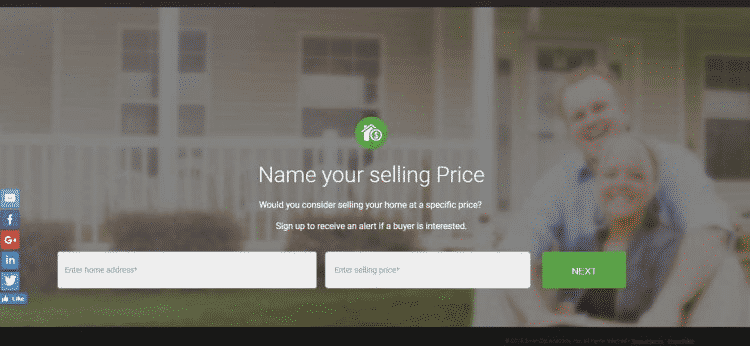
In addition to Smart Data, there are a few other tools real estate agents can add to SmartZip. These tools have an additional cost (again, determined by the median sale price and the number of homes in your market), but provide significant benefits for agents who want to take their use of Smart Data to the next level. These optional tools are:
Smart Targeting
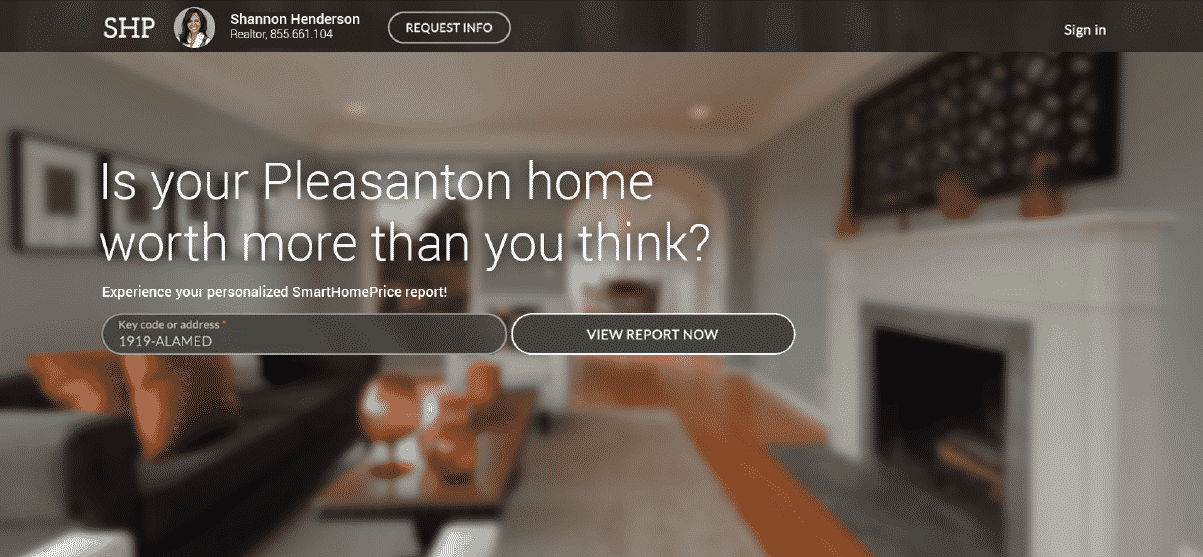
This automated marketing solution takes Smart Data and builds marketing campaigns across multiple platforms to reach your targeted leads. The SmartZip-identified potential sellers will see marketing from you in the form of direct mail (postcards and letters), email marketing, and ads across social media and Google, driving traffic to lead converting branded landing pages.
Remember, the Smart Data includes a lead profile with things like social media accounts and contact information including phone numbers and email addresses, on top of mailing address data, so utilizing the Smart Targeting service takes all the guesswork out of assembling the marketing to reach your prospects.
Real estate agents are given the option to review every piece of marketing before it goes out too, so you can rest assured any message being sent will be in line with your branding and business model.
Reach 150

If you want to further augment the marketing value of Smart Targeting, Reach 150 is a unique and effective way to do it. With Reach 150, SmartZip uses an automated process of Smart Targeting to reach out to past clients, specifically those who haven’t given you a review. They’ll also send communication to current clients after their purchase or sale has closed to solicit a review.
Why go after reviews? So that they can take these reviews and plug them into the Smart Targeting system, using the positive feedback you receive from your clients to build additional ads to be served to your potential clients at just the right time, adding an element of social proof to your marketing.
This clever system is great for active real estate agents with a high-closing volume, but also works well for newer agents because you have a chance to pick and choose exactly the reviews you want to highlight on your personalized review website. Even if you only have a couple of reviews, the Smart Targeting tool can use them to build ads and send traffic to your lead converting landing pages.
Sphere
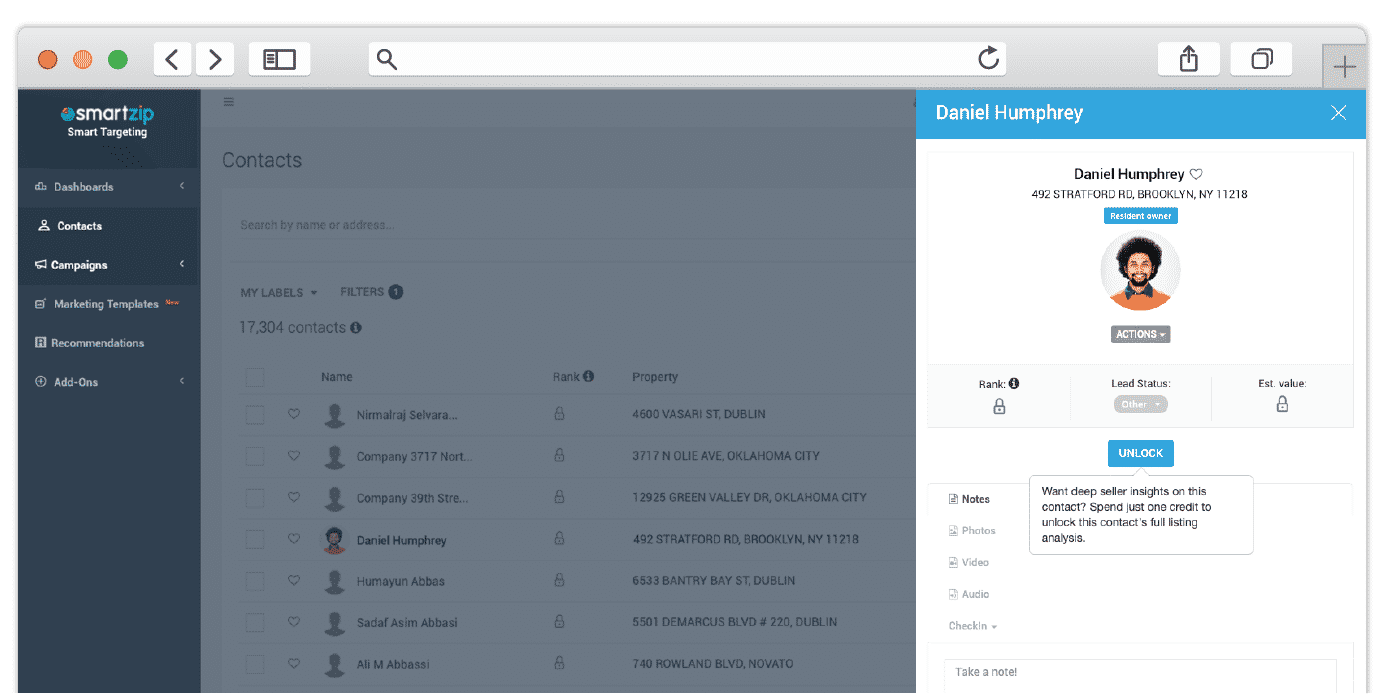
For successful real estate agents, upwards of 30% of your annual business comes from your sphere of influence. But, if you’re like most Close readers, the Contacts app on your phone is jammed with so many people it’s hard to know exactly who you should be reaching out to and which referral source you should be nurturing.
This is why SmartZip took their predictive analytics algorithm and applied it to your contact database. Just upload your contact list and SmartZip will identify which of the people you know are most likely to list their home for sale in the next year or so.
With this information, you can be a lot more strategic about who you reach out to with regular touches, prioritizing the most important relationships first.
SmartZip also offers other back-end tools like a basic customer relationship management (CRM) tool, but the functionality there is relatively basic. If you’re using Smart Targeting, much of the marketing automation connects back to this CRM, so it’s a required part of the ecosystem. But, SmartZip does easily integrate with just about every major CRM on the market, so you can still use a system you’re already familiar with.
SmartZip Drawbacks
We’ll be honest: We’re a big fan of this technology and the advantages it gives agents who can effectively employ it. But it’s not perfect.
For starters, SmartZip doesn’t offer exclusive leads. In other words, if another real estate agent in your market is also a SmartZip user, both of you are vying for the same property owners the algorithm has identified.
Secondly, as we mentioned before, SmartZip is pretty pricey, especially since they require a commitment of at least 12 months to get started. If you’re just getting started in the real estate business, you may not have an operating budget that would allow for this sort of annual expenditure.
Lastly, as a product of the way the SmartZip system works, the leads here take longer to nurture. Remember, you’re reaching out to homeowners and establishing relationships with them before they have even decided they want to put their home on the market, so the time it takes to convert them to listing clients is going to be greater. If your initial follow-up and sustained lead nurturing skills aren’t up to snuff, this is going to be a challenge.
Is SmartZip Right for You?
So, now you know the ins and outs of SmartZip. The question remains, “Is SmartZip right for you?”
Yes, if:
- You have a great follow-up and nurturing strategy that can take the leads you connect with and carry them the rest of the way down the funnel.
- You have vision and strategy for the long term. Remember, SmartZip isn’t an overnight success tool; you need to plan to keep sellers in the “lead” category for months or even years before they convert.
- You have the budget to invest even without early-stage returns.
No, if:
- You’re looking for quick win, one-off leads that are ready to convert to listings very quickly (if this is you, give Inbox Real Estate Leads a try).
- You’ve got a small (or non-existent) monthly budget for lead generation (if this is you, try a prospecting tool like REDX).
- Your business plan hasn’t been fully developed, making it difficult to commit to a long-term strategy (if this is you, check out our article on developing a real estate business plan).
- Your lead nurturing strategy is weak.
So…Is SmartZip the Future of Real Estate Prospecting?
There’s no doubt about it; predictive analytics are going to play an increasingly important role in real estate marketing in the months and years ahead. Real estate buyers and sellers have more choice today than they’ve ever had in terms of the number of agents looking to help buy or sell their home, plus options to conduct a FSBO transaction. Real estate agents who can create relationships with likely buyers and sellers early will definitely have an advantage.
Will SmartZip be the leader in this? It may be too early to say. But one thing is clear: The technology, strategy, and results that SmartZip is producing right now indicate that agents who bet on them now are likely to see big returns in the future.
More Resources
There are lots of players trying to be the dominant force in real estate predictive analytics, and while no platform is perfect, we think that SmartZip is getting closer. It’s definitely a more techy approach than most real estate prospecting strategies.
We expect predictive analytics to be more and more mainstream as a proven real estate lead generation idea in the next couple of years. Check out our list of underrated lead generation ideas if you need some more fresh ideas.

